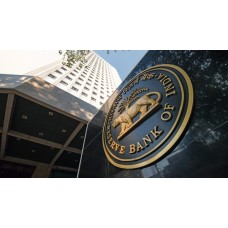Incentivise Bank Credit Growth
The Reserve Bank of India (RBI) in the recent monetary policy has tweaked the liquidity management framework by replacing the daily scheduled repo operation with long-term repo operation (LTRO). The RBI has additionally announced an incentive structure for banks to encourage credit flows to the MSME and consumer segments.
The agency believes that the measures are encouraging for banks especially in the current environment. However, the overall success of the measures is hinged on a low interest elasticity of demand. Post the announcement, the RBI has already infused INR750 billion through one LTRO and another two tranches of three-year LTROs. It has also announced one more auction of INR250 billion for the next three years.
Ind-Ra believes the new arrangement of providing long-term funding at a fixed rate (current average rate 5.15%) along with the relaxation in cash reserve ratio (CRR) for incremental loan book growth in certain segments would encourage banks to extend credit to the retail and MSME segments.
Ind-Ra believes the short-term requirement of funds for banks will further diminish amid a low demand for credit, but the P&L impact of CRR relaxation is expected to be limited (INR6 billion per annum for the system for the next five years).
Therefore, the requirement of both certificates of deposits and term deposits will come down, while their rates could see downward pressure. The impact of this measure could be more for banks with lending appetite, but is constrained by an unfavourable deposit profile.
The only caveat here is that banks should not use the proceeds of this source towards investments in government securities. LTRO could also reduce the spread between the weighted average deposit rates of private sector banks and public sector banks by sustainable and stable support through LTROs.
CRR Relaxation to Improve Profitability of Banks: All the CRR that is saved could be deployed for incremental lending. Depending on the asset class, the banks would earn between 8%-9% on that against nil currently on the CRR that is no more required to be kept. This could provide banks with more tolerance for credit cost in these advances.
Assuming average six-month growth of 7% in retail (home and auto) and MSME segments and the same to be funded by liabilities that in ordinary circumstances would require a CRR of 4% to be kept aside, banks would have to keep a low CRR to the extent of INR80 billion-90 billion over one year which could consequently have a positive impact on the P&L of about INR6 billion annually for the next five years.
Ind-Ra does not expect the P&L impact to be material, but this could be an incentive to lend with higher tolerance for credit cost. The way it is calculated, the assignment transactions undertaken by banks may also qualify for the CRR relaxation and hence this could provide upside to the agency’s estimates on profitability and also provide incentives to the bank to do more assignment transactions from non-banking financial companies and housing finance companies so as to provide them additional liquidity support through off-balance sheet transactions. Housing finance companies are likely to continue to see growing competition from banks in the housing segment as banks are likely to incrementally target growth in the segment.
CRR Relaxation Would Have Neutral Impact on Liquidity: The new framework does not target any specific level of system liquidity to be maintained; and overnight call money rate will continue to be the nominal anchor. Ind-Ra believes that the daily repo rate could emerge as a critical enabler for ensuring a minimal spread between call money rate and policy rate, particularly when system liquidity is close to neutral or at par and credit demand rises.
On the other hand, Ind-Ra believes the CRR relaxation for incremental credit would not add any material liquidity to the system. The new endogenous deposit creation by way of incremental credit will offset CRR relaxation. In absence of a regular daily repo window, banks would have to manage liquidity more proactively with the thrust on broadening other funding sources including tri-partite repo and call money market.




